3732 people reached on Lassi with Lavina FB page – 302 engagements – 29 Likes FB Insights
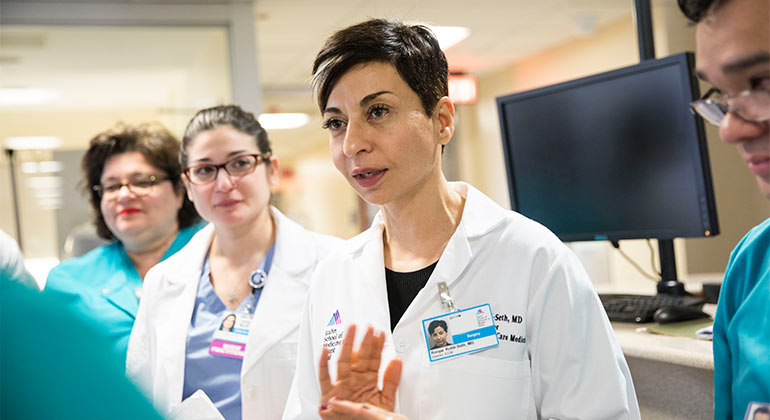
Battling Coronavirus – heroic first-responders on the frontline
In New York, finally a ‘flattening of the curve’
As coronavirus continues to ravage American cities with over 424,000 cases and 145,000 deaths, New York City reached a sad distinction – of over 799 deaths in a single day. This once vibrant ‘center of the universe’ is today a dismal ghost town with empty streets, shuttered stores and restaurants and with only a sprinkling of people, masked and gloved, out for any urgent matters. You hear the constant wail of the ambulance siren and the sheer loss of lives in New York weighs heavy on every resident.Yet at 7 pm the city comes alive with the clatter of banging utensils, musical instruments and clapping of hands as people gather at their windows and doors to salute the real heroes behind the coronavirus battle – the tenacious and devoted healthcare workers – the physicians, nurses and staff in the hospitals for whom there is no respite, and many of whom have themselves got infected with the virus while rescuing others. It is for them that the cars honk, and the people clap at precisely 7 pm every single day.

New York Children Thanking Healthcare workers, one poster at a time
In a multicultural city like New York, Indian-Americans are within the categories of victims, survivors and healers. Brahm Kanchibotla, a correspondent with United News of India passed away from COVID-19, one of several Indian-American deaths as the virus continues to batter the country. He had been a part of New York for 20 years.
Here in New York a family is frantically searching for a plasma donation for their mother Susham Singh who is in the Houston Methodist Hospital in Houston on a ventilator. In New York a prominent leader of the Indian American community on Long Island, Professor N.S. Ramamurthy tested positive for COVID 19 and is on a ventilator fighting for his life at Stony Brook Hospital for the last 9 days. There is an appeal for a plasma donation from a recovered COVID-19 patient.
There are many Indian-Americans in the healer category too since so many from the sub-continent are physicians, nurses, medical technicians and healthcare workers. One doctor who enters the living rooms of New Yorkers every day is Dr. Sanjay Gupta who conducts Global Town Halls about coronavirus every day with Anderson Cooper on CNN, helping everyone keep informed and calm.
New York’s hospitals are hotspots right now and one of the battlegrounds is The Mount Sinai Hospital which has several branches in Manhattan and Queens. Founded in 1852, it is one of the nation’s largest and most respected hospitals, acclaimed internationally for excellence in clinical care. A doctor who is out there in the trenches dealing with hundreds of coronavirus cases is Dr Umesh Gidwani, Chief of Cardiac Critical Care at Mount Sinai Medical Center. He describes how volatile the situation is in a coronavirus ICU: “There is usually a variety of intensity within any intensive care unit but here everyone is equally super sick – so there is no variation, no downtime, there is no easy patient.”
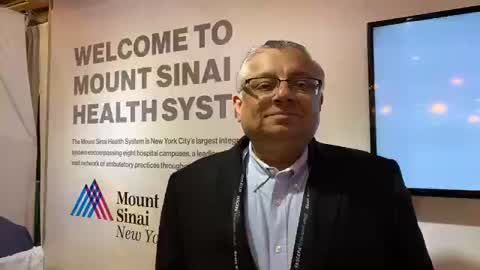
“My responsibility as the Director of ICCM is to lead the care of all patients in our expanded ICUs. Maintaining staff morale is one of my priorities throughout this COVID-19 crisis and giving them access to the fast changing medical information.”
Were there difficulties in being a woman physician leader during the pandemic? She says, “Being a woman in a leadership position can have its challenges but I am lucky to be a part of an organization where I am empowered and supported. As a mother, I am always vigilant about the well-being of my family during these difficult days.”Male or female, all physicians on the frontline have to face the death of some patients who could not be saved. In these days of coronavirus, there is an added challenge. As Gidwani explains, “Typically when somebody is dying the family gathers around and there’s a sense of closure. Here family members are not allowed and nurses and doctors don’t unnecessarily enter the room because it’s a highly contagious disease. We’re outside the room monitoring the patient dying. So the patient literally dies alone. There is no grieving process. So besides the physical there’s a lot of moral and psychological stress.”
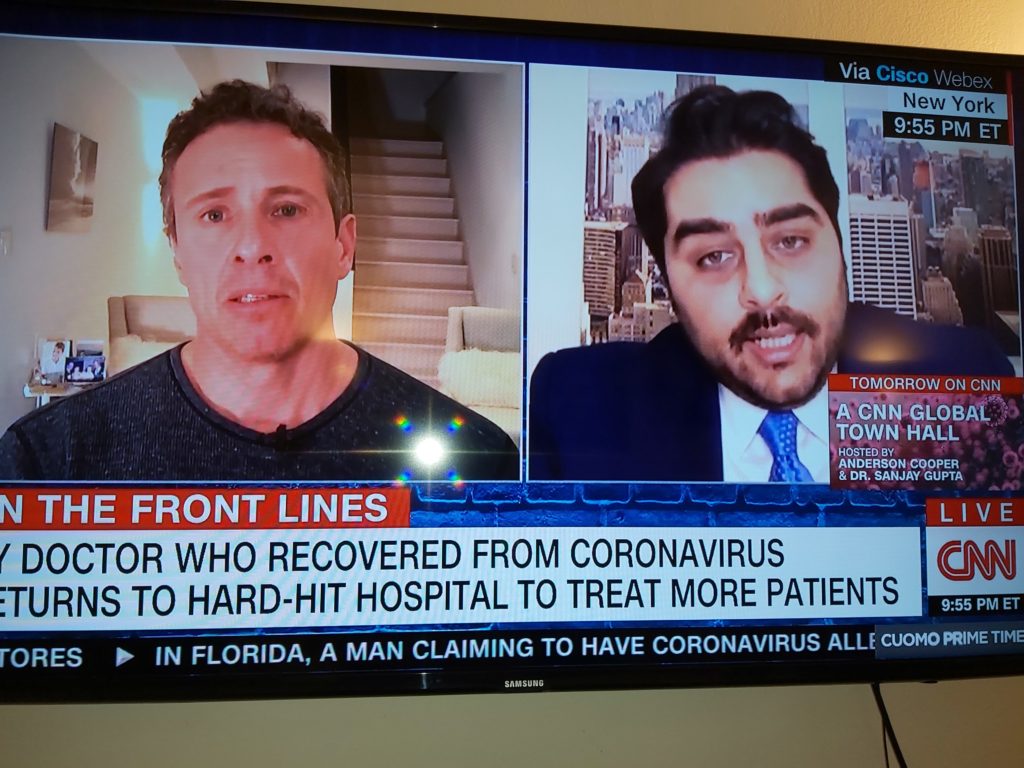
Manya told Chris Cuomo, the television host who himself is suffering from COVID-19 (and conducting his television show in self-quarantine from his basement), that he, like others on the frontline, became an emergency physician to change people’s lives and there was no question about not returning: “There’s just so much need out there, and there’s such a shortage of supplies and people in the workforce that we’re excited to get back on the frontlines.”
He too spoke about the grief of losing patients: “The real sad part about this disease is patients are dying alone. Not having your loved one hold your hand in your last few minutes has got to be one of the most painful, painful experiences. So some of us have started Facetiming families, so that they can whisper a prayer in a patient’s ear.”
As New York still faces the threats of the disease, what would Dr. Umesh Gidwani say to ordinary people who are stressed out and fearful at this time?
“We will get through this, together but apart, and we will emerge stronger and more resilient,” he says with New York spunk. “But this is no time to slack or let down your guard. We have to maintain social distancing and a lockdown. If you don’t go out – you don’t get the bug! Practice common sense, diet, get exercise, good sleep and wash your hands. There’s no need to be anxious – just hang in there!”
(This article was first published in my weekly column India in America in CNBCTV18.com)

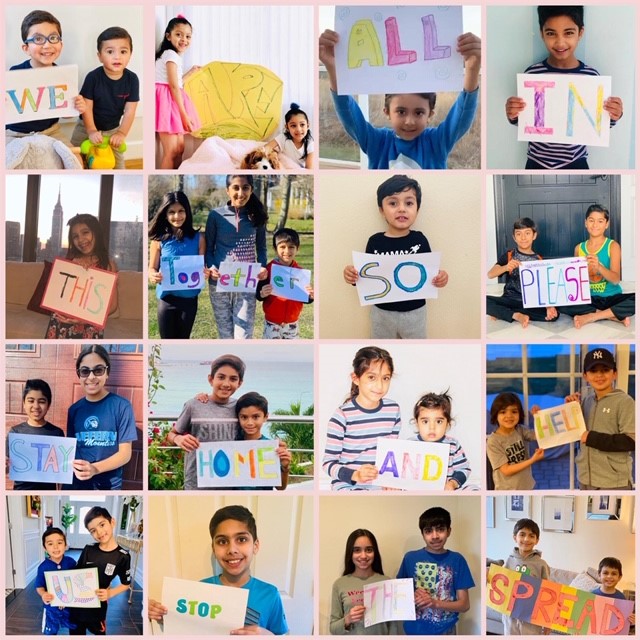
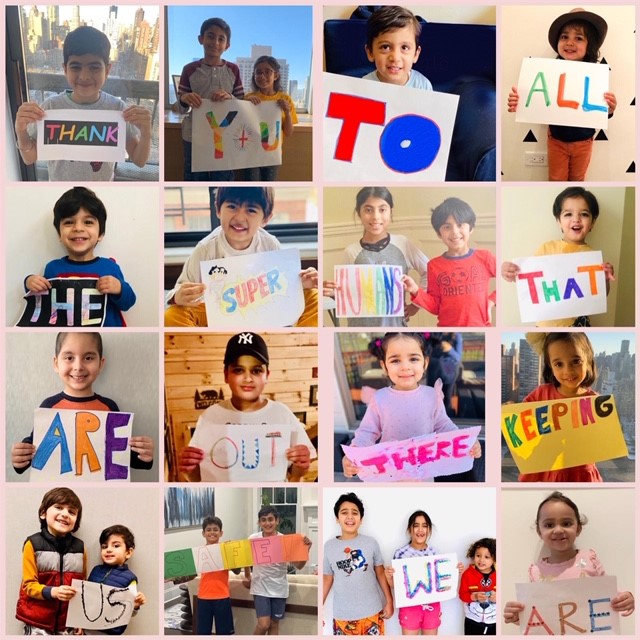
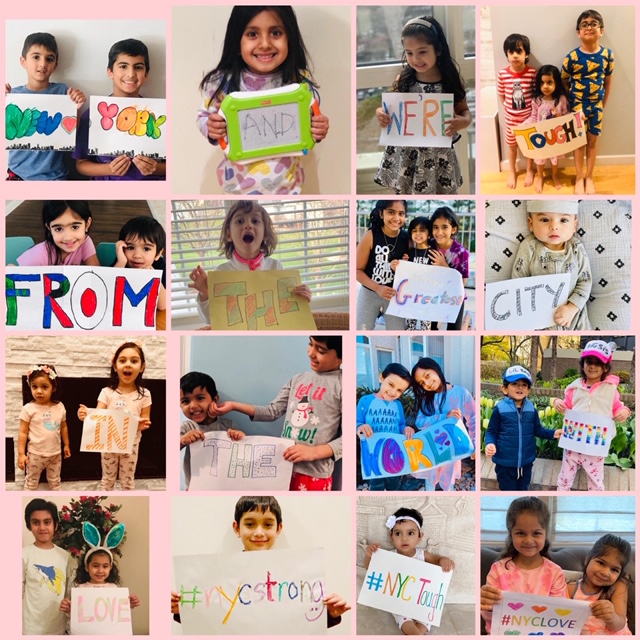
1 Comment
Pingback: | Lassi With Lavina